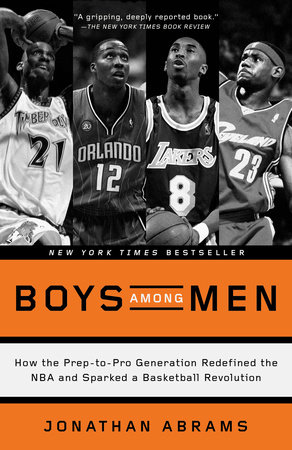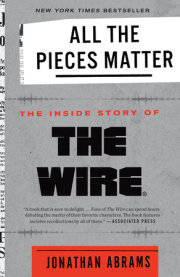Bucky Buckwalter carefully placed the pile of hundred-dollar bills on the orange crate that doubled as a dining room table in Mary Malone’s living room. A room in the broken-down home belonged to her son Moses. A sizable hole in its wall allowed water in whenever it rained. The money for improvements and a better life had been placed before them by Buckwalter, a pro basketball executive. Buckwalter empowered Moses Malone with a choice. He offered Malone riches over poverty. Malone just had to forsake the rest of his childhood.
Moses Malone was an unassuming, gangly teenager from the South. He lived in Petersburg, Virginia, in a duplex off St. Matthews Street. The city was once a major Civil War conflict zone. In 1974, it hosted Malone, a teenager who happened to be basketball’s greatest recruiting prize since Kareem Abdul-Jabbar. The sport came easily to Malone. He competed in playgrounds against adults. The kids received orange juice for winning. If they lost, they rounded up spare change to give their elders some beer money. “We’d beat them so bad, they thought they were already drunk,” Malone recalled with a hearty laugh. College recruiters arrived in droves to watch Malone at Petersburg High School, where he steered his team to 50 straight victories and back-to-back state championships, forsaking their families and checking into hotels for months. One day, a representative from Oral Roberts pledged that a higher power would cure Mary Malone’s bleeding ulcer should her son bless the school with his basketball abilities.
His talent traveled by word of mouth in an era when college recruiters routinely circumvented NCAA rules of amateurism. A wink could mean a new car for a recruit and a turned head could result in the transfer of a handful of money. “It was like the Wild West,” noted Howard White, then an assistant coach at the University of Maryland. Recruiters found Malone a reluctant listener. When they drove him in their cars, he feigned being asleep. When they came to his house, he pretended that he was not home. He had heard so many pitches that they had blended together by the time he finally committed to stay close to home and attend Maryland. When Maryland’s coach, Lefty Driesell, learned of Malone’s pending intentions, he camped outside the Malones’ home. Malone awakened at about 7 a.m., wiping the sleep from his eyes. Driesell, at his bedside, came into focus. Malone signed the offer before rolling over and returning to sleep.
Then, Buckwalter, his money, and the American Basketball Association came along. The upstart league was widely viewed as inferior to the National Basketball Association’s purer, more technical brand of basketball. The 11-team ABA originated in 1967 and predicated itself on showmanship, with its red-and-white ball and three-point line. The league existed in the NBA’s shadow, but exploited a crack in luring talent by accepting players with remaining college eligibility. The NBA finally relented, following Spencer Haywood’s antitrust lawsuit, and allowed players to leave college early and join their ranks if they could prove a financial hardship. But no high school player had ascended straight into basketball’s major leagues. (The Detroit Pistons had drafted Reggie Harding out of high school in 1962, but he first played in basketball’s minor leagues before joining the NBA.) By chance, Buckwalter, the director of player personnel for the ABA’s Utah Stars, had stumbled upon one of Malone’s high school All-Star Games. He marveled at Malone’s blend of height and quickness. A hard wind would have blown Malone over. He stood 6 feet 11 inches tall and weighed just over 200 pounds. But his feet danced like those of a boxer. They never stopped moving on the basketball court. The colleges wanted the best basketball players. Buckwalter did, too. The Stars drafted Malone in the third round of the ABA’s 1974 draft. Most viewed the selection as little more than a publicity stunt, although it granted the Stars the ability to negotiate a contract with Malone.
Buckwalter had heard rumblings about the envelopes stuffed with money that one of Malone’s uncles requested just to let a recruiter meet with the teenager. Buckwalter had to sneak under a fence and narrowly avoided the jaws of a dog simply to knock at their front door. Mary Malone answered the door. Buckwalter glanced at the scarce furnishings. Mary Malone had four pictures on her mantel: one each of Jesus Christ, Martin Luther King Jr., John and Jackie Kennedy, and her son Moses.
Buckwalter knew that Moses Malone had heard every possible spiel. He discussed being a pioneer with Malone. Malone stared and mumbled. Buckwalter offered to build the family a new house.
“This is yours,” Buckwalter said after he put the money on the crate. “This is for you and your friends. This isn’t like Maryland, where you never really see anything.”
Malone nodded and mumbled some more. He left the room and phoned Lefty Driesell. “Coach Buckwalter is over here and he’s got $25,000 in cash lying on my table,” Malone told Driesell. “He wants me to sign this thing. Should I sign it?”
Driesell did not miss a beat. “Tell them to leave,” he said. “And if they don’t, call the police. Now, if he puts a million dollars on your table, then call me back.”
Driesell’s enthusiasm could drown out the voices of the hundreds of other coaches who lusted after Malone. Driesell was a marvelous, relentless recruiter. He had told Malone that they could start counting their national championships together. He planned to pair Malone with John Lucas, a talented guard, and purchase him an insurance package should an injury derail his future professional career. Driesell sold the university to Malone. More importantly, he sold himself to Mary Malone. She supported herself and Moses, first as a practical nurse and then as a meatpacker. Moses’s father had left the family before his son turned two. Driesell told Mary Malone that he was a God-fearing man and Maryland was a Christian-based program.
He was not going to lose Moses Malone without a fight. Driesell had successfully and skillfully fended off the other college recruiters. He now planned on struggling for Malone all over again. He preached the sanctity of college. He told the Malones that he had their best interests at heart and recommended that the Malones talk to an agent acquaintance, Donald Dell, and his partner, Lee Fentress, before making any decision.
The Malones agreed to the meeting. Dell found Malone to be aloof—as all the college coaches had. He wanted his attention.
“Moses, have you ever heard of slavery?” Dell asked.
Malone’s head snapped up. “Well, this contract you’ve been offered is slavery.” The contract, Dell said, ran for 16 years. Utah only guaranteed the first four years, with a team option for the next dozen years. “I hated the contract they offered him,” Dell recalled. “I thought it was chickenshit that they arrived at their house and put all that money on the dining room table of a poor person’s home. The whole thing smelled.” Dell wearily agreed to represent Malone in the negotiations. “I was very, very worried that he wouldn’t make the team or he would turn into something less than he wanted to be,” Dell said. “A young eighteen-year-old with no education. That’s what I was really worried about and I really didn’t sleep for a couple of weeks thinking about it.”
But Malone’s decision had been made long ago. At 14, he had scribbled in the back of his Bible that he wanted to be a professional athlete. To reject this opportunity meant turning his back on the gift. “I said if I make this decision, this decision is going to be on me,” Malone said. He had remained mostly quiet throughout the process. His muteness did not reflect the lack of interest it often projected. “What I do is listen and pay attention,” Malone said. “I listen to words and I can tell if they’re trustworthy or if they’re honest.”
The Maryland players offered Malone their combined per diem for food and laundry, about $15 a month from each player, in an effort to make him stay in college. His college career lasted all of five days. John Lucas, his roommate, tried stirring Malone one morning. “C’mon, we’ve got to go,” Lucas said.
“Big Mo going pro,” Malone replied. “Big Mo can’t take these damn college hours.” He signed a seven-year contract with Utah that would pay him up to $3 million.
•••
Moses Malone’s leap from high school did not immediately change professional basketball’s landscape. In a hierarchy of natural progression, players starred in high school and made their names in college before graduating to the pros. Darryl Dawkins and Bill Willoughby jumped to the NBA from high school a year after Malone’s decision. Malone joined the NBA in 1976, when the league absorbed much of the ABA, and carved out a Hall of Fame career. But Dawkins and Willoughby provided cautionary tales for different reasons as to why teenagers, both physically and mentally, were not prepared for the NBA’s rigors.
That thought persisted until a lanky teenager named Kevin Garnett reopened the dormant door in 1995. The game had been transformed by the time of Garnett’s arrival. Players commanded millions in salary, a large jump from $130,000—the average salary of an NBA player in 1976. Malone’s decision ultimately birthed the route into the NBA for one of the game’s greatest group of players, from Garnett to Kobe Bryant, Tracy McGrady, LeBron James, and Dwight Howard. They grew into stardom, while quickly advancing from their proms to playing against grown men whose paychecks accounted for how they fed their families. “When I see guys like Kobe, LeBron James, Kevin Garnett still doing what they’re doing, it just makes all the high school players that came before very proud,” Malone said. “We’re doing what we’re doing because we were the best in high school and we ain’t got to go to college for four years to be the best.” They did not first toil in minor leagues, as in professional baseball and hockey. They did not have to wait three years after high school before becoming professionals, like NFL players. Most became successful and, lacking stardom, made more money than they would have otherwise dreamed of. A few failed and faded with their chance at fame and fortune eternally lost.
They all started at the same place. At an early age, they showed remarkable physical gifts and someone pegged each of them as a phenom. The days of a talent undiscovered until college are long gone. High school games are televised across the country. Elementary-school children are ranked nationally. “It’s the same reason we want to see young, gifted actors, musicians, or pianists,” said Jeremy Treatman. Treatman served as one of Kobe Bryant’s high school assistant coaches and later scheduled and broadcast marquee high school games. “They’re phenoms,” he continued. “They’re prodigies. LeBron James was a prodigy. Dwight Howard’s a prodigy. Kobe Bryant’s a prodigy. When someone can do things that no one else can, you’re just blown away by it. Even when you’re seeing a seven-year-old girl sing the national anthem perfectly and you’re blown away for days. It’s that kind of thing.” But the attention often came with a price: an abbreviated childhood and mostly unrealistic expectations. “The hustle and bustle, prostitution, drugs, gang banging, and all that [in his neighborhood] to the AAU [Amateur Athletic Union] circuit was no different,” said Tyson Chandler, taken second overall in the 2001 draft out of high school. “It was the same hustle. It was just legal. It was definitely the same characters I would see on my street corner, just disguised different. My life was accelerated because I had to learn how to protect myself and use people who thought they were using me and do all of that to get to where I wanted to get to. I was very aware of what was going on at such a young age. That innocence is kind of thrown out the window.”
Malone’s decision to fulfill his own prophecy mutated over the years. A decision faced by a modern NBA prospect who considered the jump from high school became saturated with too many parties all with a stake in his future: the coaches, the families, the shoe companies, the NBA, the handlers, the agents. Former NBA commissioner David Stern began presiding over NBA drafts that may as well have been high school graduations. The procession stopped in 2006 with a rule mandating draft-eligible players be at least one year removed from high school. “It’s a failing of so many institutions, for which I think we are drawn into it,” Stern said. “I don’t mean to take any attention, cut away any responsibility, because we’re part of the system, but we’re not the lead part of the system.”
They are the end goal, the league kids dreamed of and, for a while, played in. The ban on high school players is continually discussed. Some want it eliminated. Others want to extend the league’s age minimum to at least 20 years. “It’s just not right,” said Jermaine O’Neal. He jumped to the NBA from high school in 1996. “You can go to the military and fight a war at eighteen years old and give your life at 18 years old. Those people are going to war to try to better their lives. It’s life or death in the military. You’re allowed to carry a gun and give your life. That’s the ultimate sacrifice. So my question is, Why aren’t you allowed to do something as simple as play basketball?”
Copyright © 2016 by Jonathan Abrams. All rights reserved. No part of this excerpt may be reproduced or reprinted without permission in writing from the publisher.






